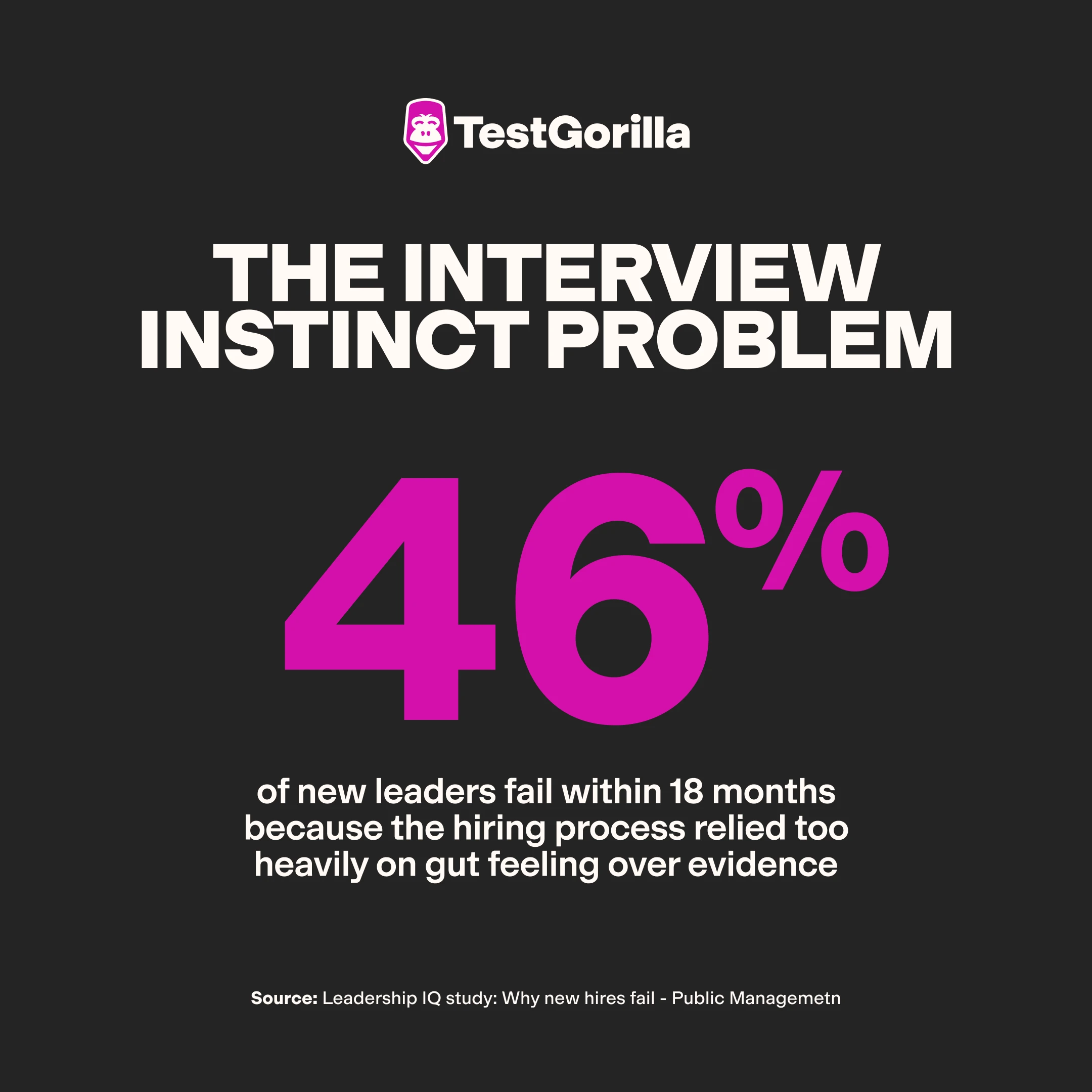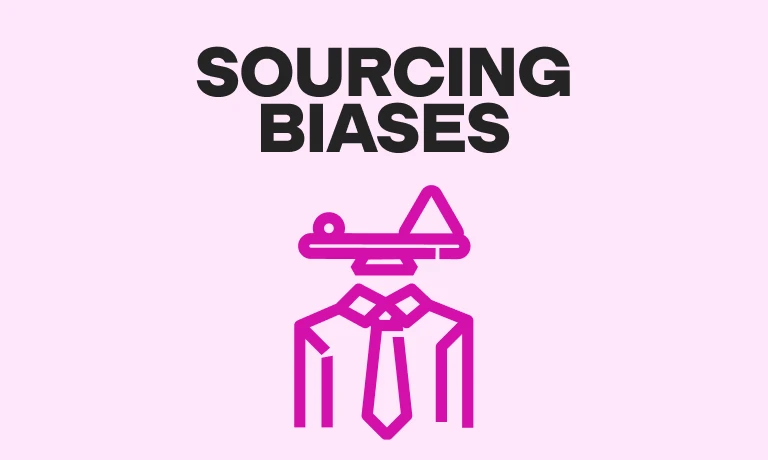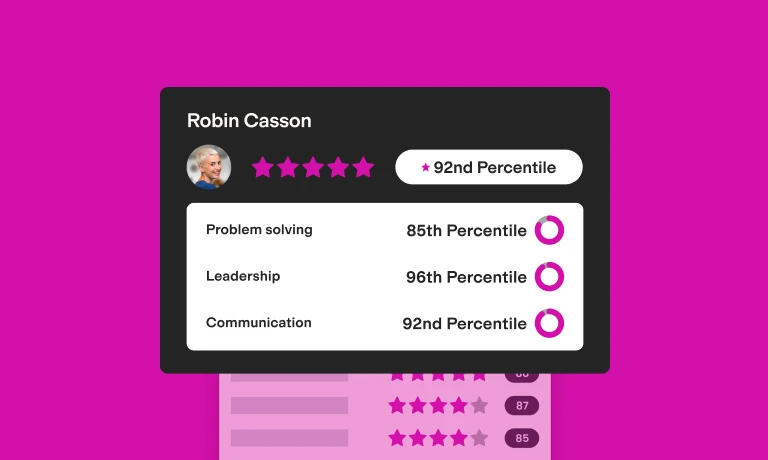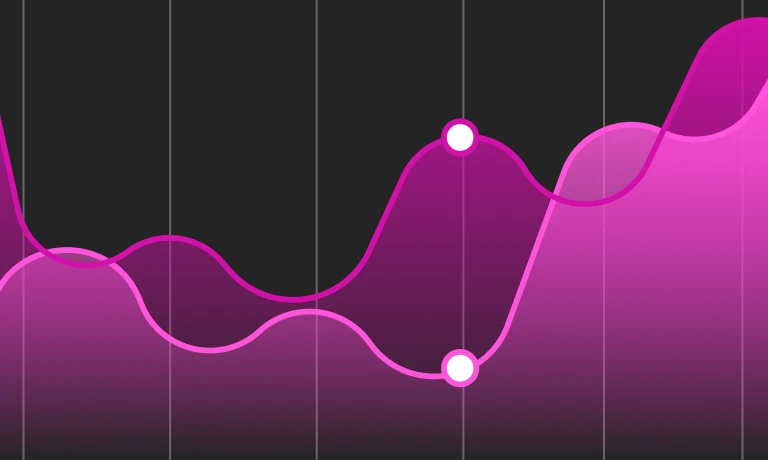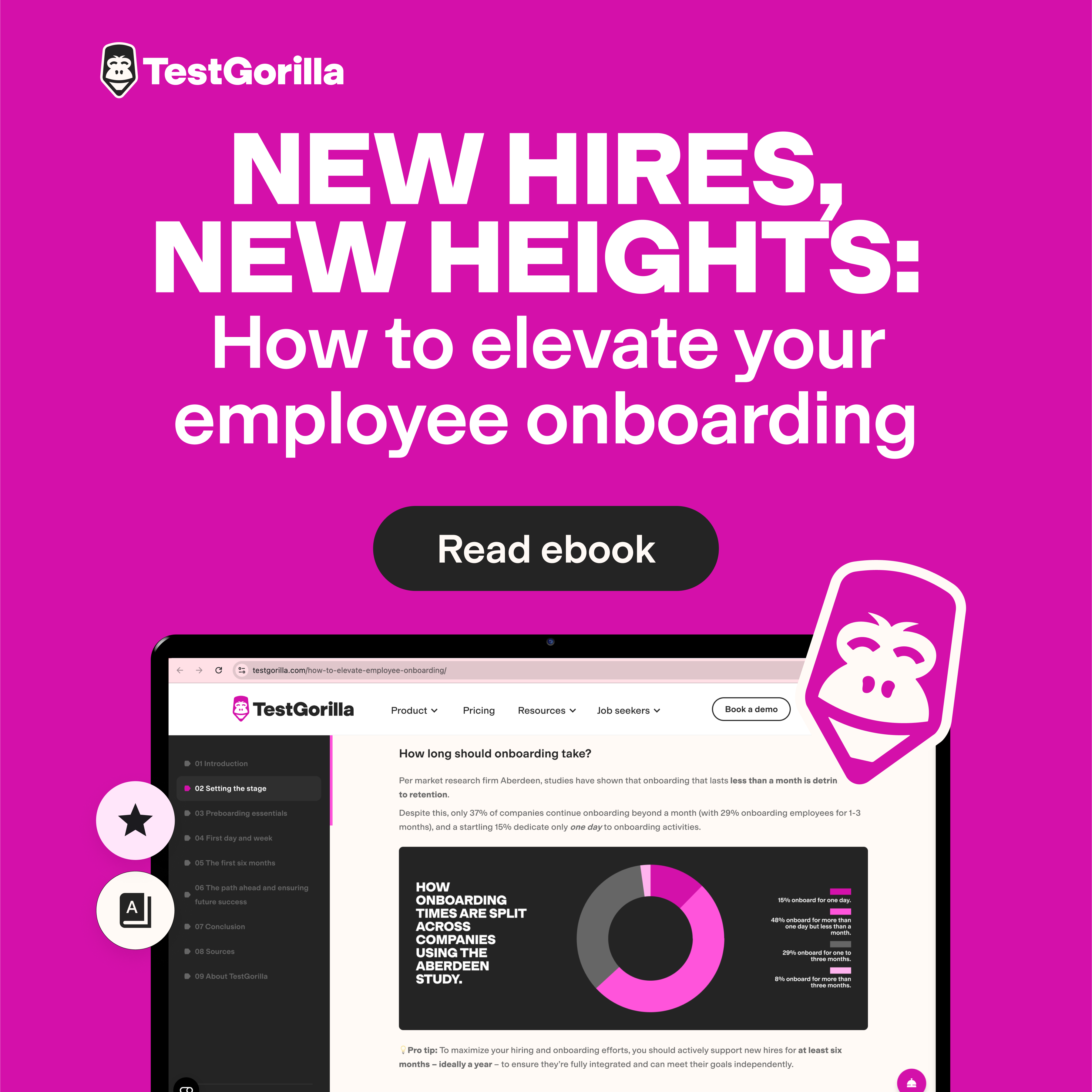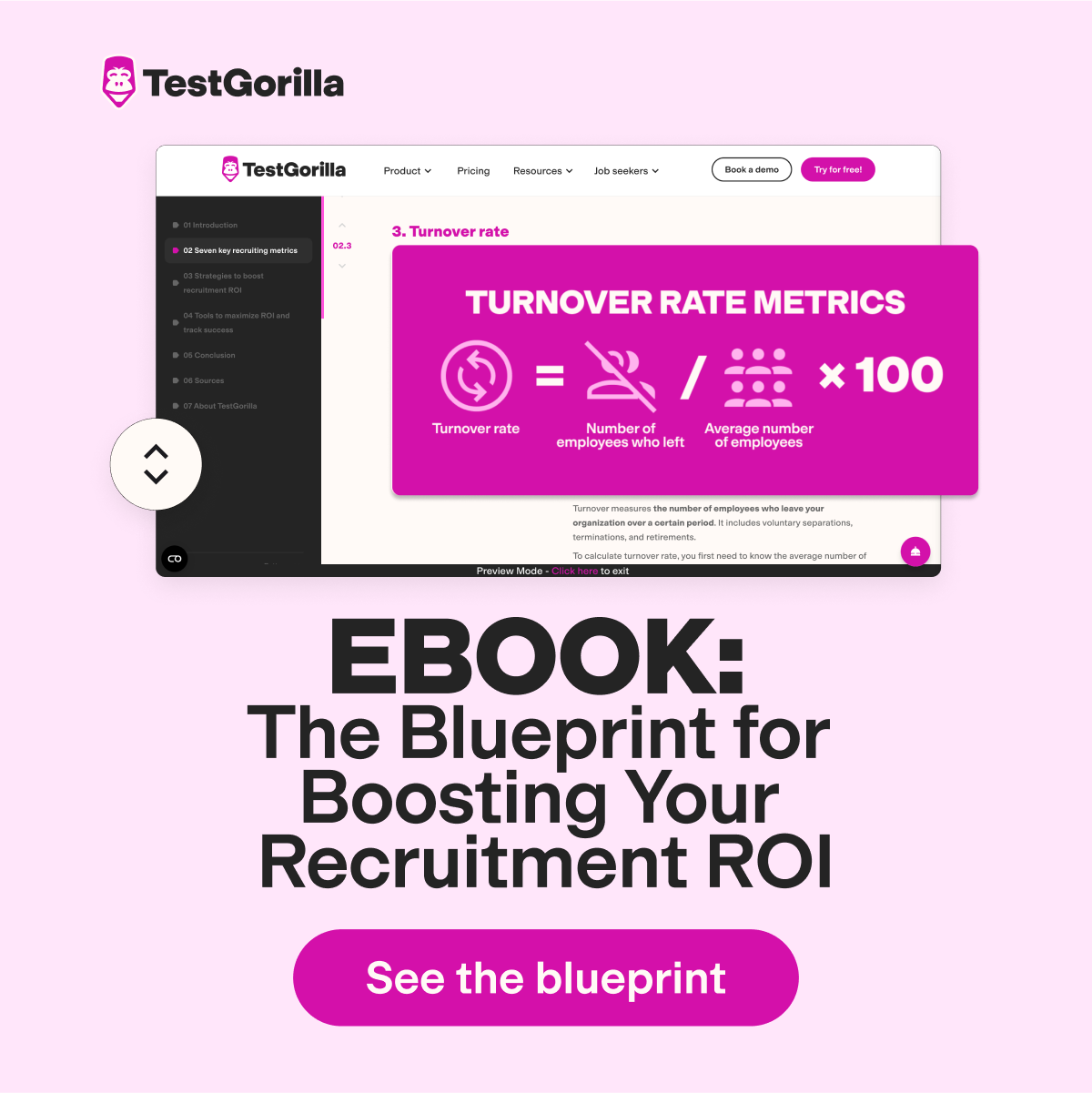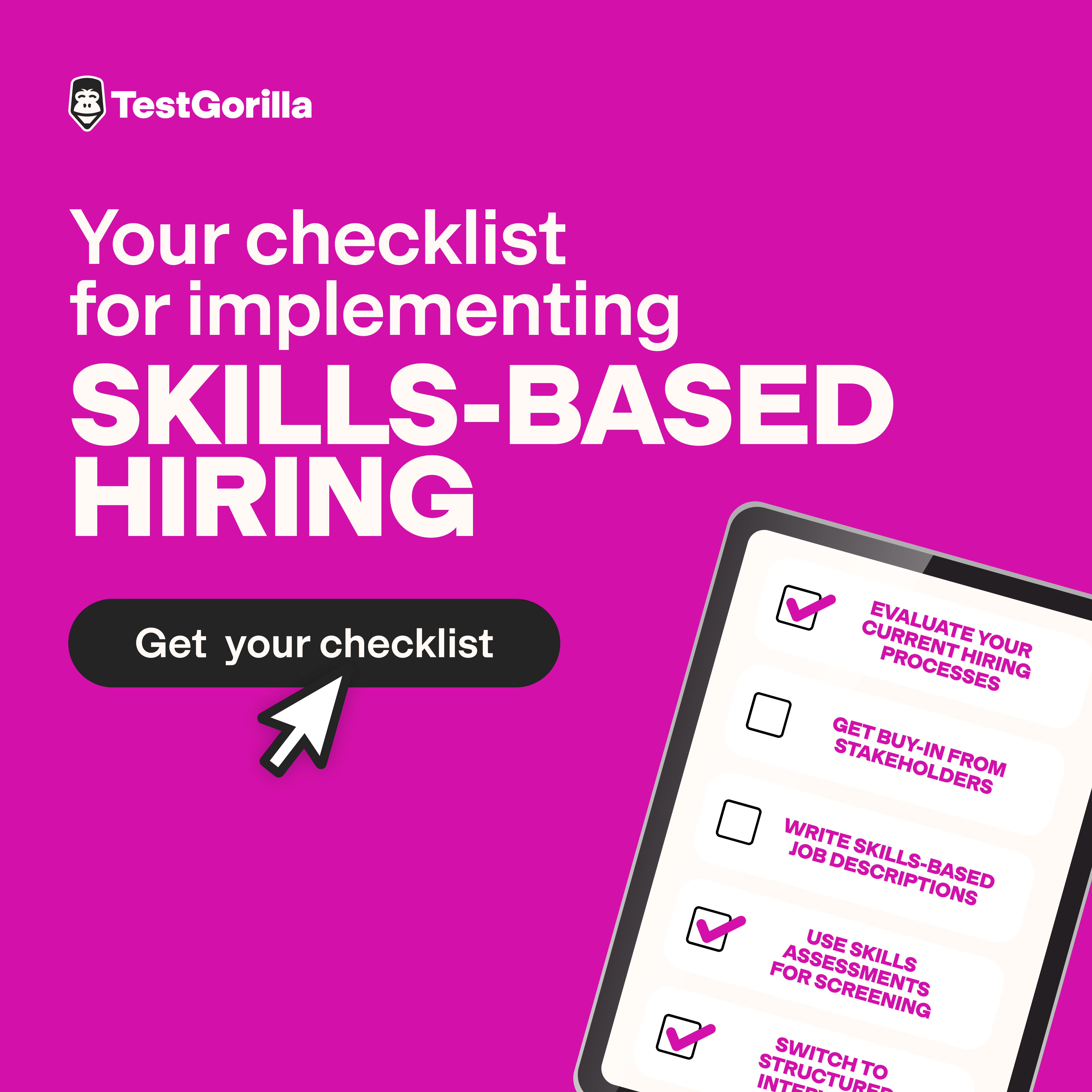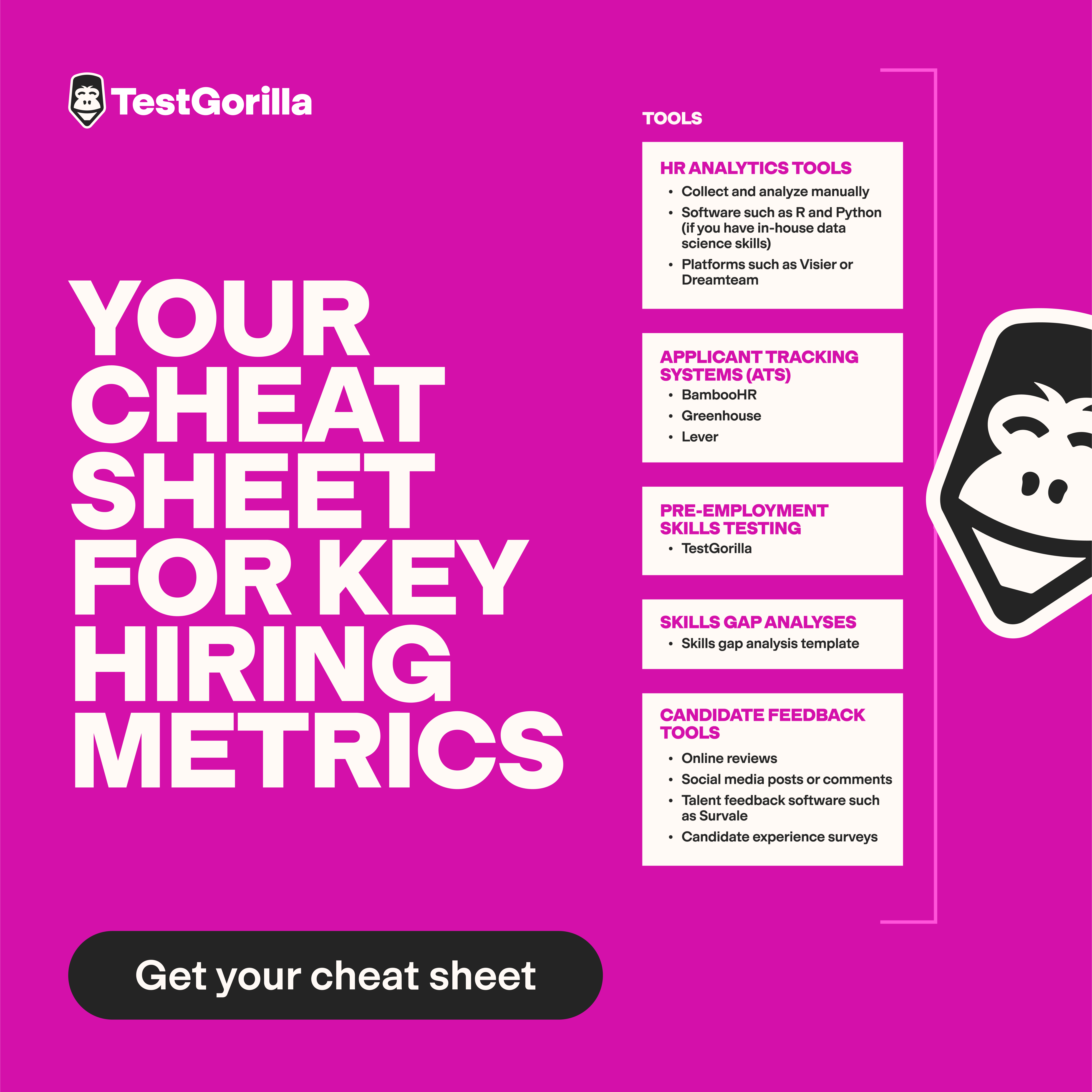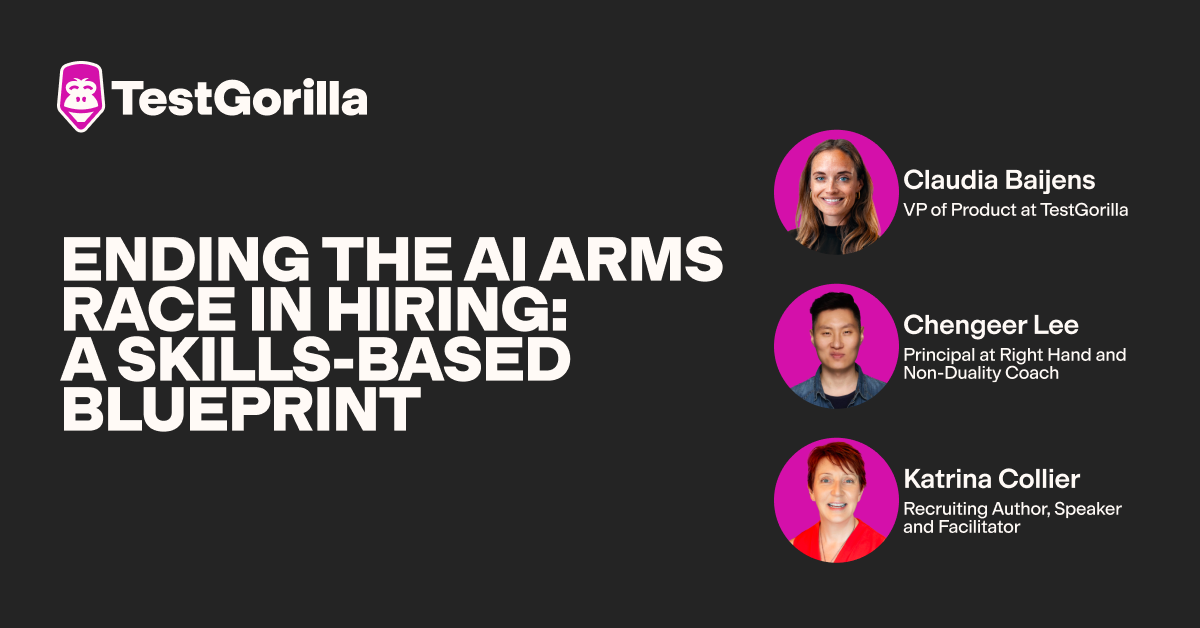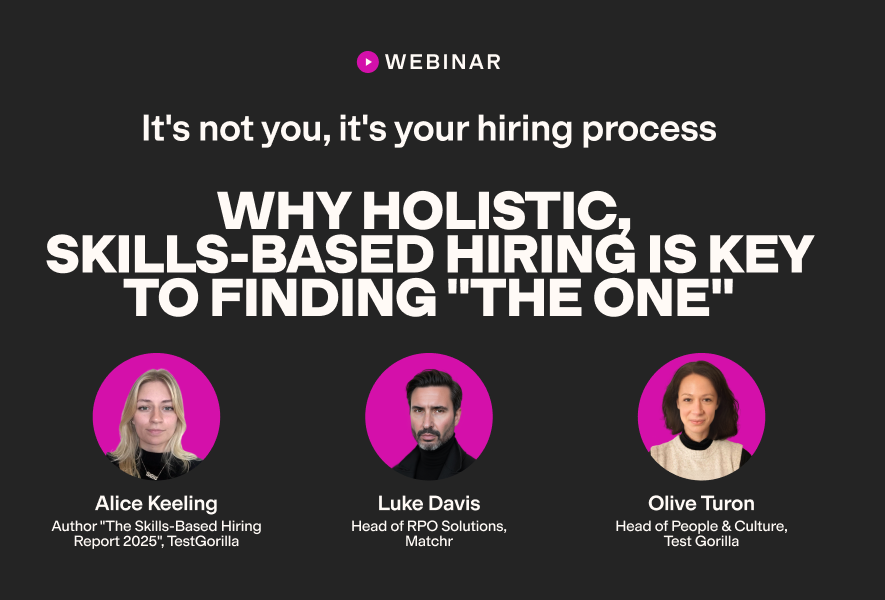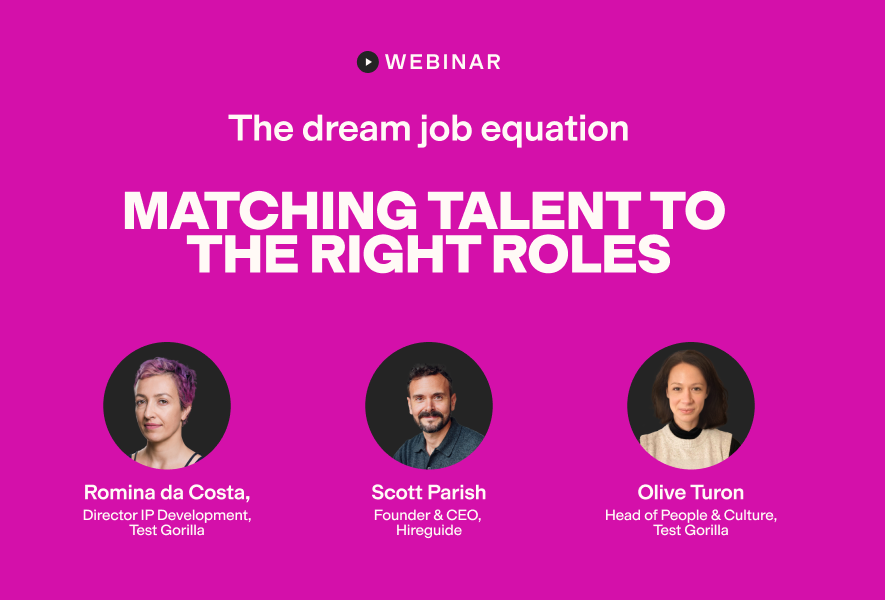“So if we take your bag into account, what salary should we give you?”
That was the question one candidate, Eleni K., says a hiring manager asked her during an interview, after another manager commented on her expensive bag amid an economic crisis.
The remark might've been meant as a joke, but it's still evidence of bias. Something unrelated to Eleni's skill – her handbag – seemed to be shaping how she'd be valued.
Moments of bias like this play out across every level of hiring. But when the role is high-stakes – like in senior leadership, critical technical work, or management of major clients – a single moment of bias can result in bad hiring decisions. And one misjudged hire can derail a project, stall a department, or ripple across teams for months.
We think it’s time to challenge the ways high-stakes interviews are conducted. So we turned to the experts to understand how conversational AI video interviews are game-changing for high-stakes roles: reducing bias, making structure repeatable, and making hiring decisions fairer.
The interview instinct problem
Interviews, especially for senior or technical roles, have long leaned on instinct. It’s that common belief that a seasoned manager can just tell when someone’s right for the job. But instinct is hard to scale, and even harder to defend when it fails.
And it’s failing more often. One study of leadership hires found that 46% of new leaders fail within 18 months – not because they lacked skill, but because the hiring process relied too heavily on gut feeling over evidence.
What hiring teams often call instinct or gut feeling is usually bias in disguise. It’s bias that feels reasonable because we’re used to it. Our brain is often reaching for the familiar: people who communicate like us, think like us, look like us, or make us comfortable.
Job seekers notice this bias. According to TestGorilla’s State of Skills-Based Hiring 2025 report, 42% of job seekers say they’ve experienced bias in the hiring process – up from 31% last year and just 21% in 2023. Bias isn’t disappearing. It’s compounding.
But most hiring bias doesn’t come from bad people. It comes from ordinary habits. Nora Burns, who’s gone undercover in more than 250 job interviews, found that even small details can quietly steer decisions: the time of day, the interviewer’s mood, or even the temperature of the beverage they're drinking during the interview.
“As soon as someone says, ‘I don’t know why, but I just like them,’ bias is already in the room,” she says.
Bias doesn’t impact only candidates. It can result in candidates who would’ve been great being rejected or, as shown above, unqualified candidates being hired.
For high-stakes roles, the risks of a bad hire go far beyond one team. A single misjudged candidate can disrupt widespread operations, delay major contracts, or erode client trust built over years.
How conversational AI is tackling the interview instinct problem and changing high-stakes interviews (with real-life examples)
Conversational AI interviewers can listen, respond, and adapt in real time. Instead of static prompts, they can follow a candidate’s reasoning, ask clarifying questions, and surface patterns in how people think under pressure.
They’re different from one-way interviews, where candidates record answers into a camera while an algorithm analyzes things like tone and word choice. Many conversational AI interviewers look and sound human, using facial expressions and natural-sounding voices to make conversations feel more authentic.
These interviews create a consistent, reviewable record of each candidate’s interview, replacing notes from a phone screen interview or the collective “feel” of a panel.
The AI asks structured, role-specific questions, follows up where needed, and evaluates the content of each response against a clear rubric (not a recruiter’s mood or memory).
Every candidate gets the same prompts and the same opportunity to demonstrate their reasoning and communication skills.
Importantly, the AI probably won’t ask candidates about their handbags. Like all AI models, conversational AI interviewers aren’t completely free from AI bias (biases resulting from the human biases in the data they’re trained on) – but they can certainly reduce bias.
And if the AI interview does do something biased, hiring teams will see it. Hiring teams can review the results, override any score, and add human context.
Seventy-eight percent of job seekers now say they prefer AI-led interviews, largely because of the perceived fairness and reduced bias.
Here’s how all this is changing real teams’ high-stakes interviews.
Example #1: For one CEO, conversational AI improves fairness and efficiency while revealing details about candidates’ reasoning that traditional interviews often miss
Olivier Wagner, Founder and CEO at 1040 Abroad, has overseen hiring for senior and technical positions across global operations. He says:
“Conversational AI has improved fairness and efficiency in hiring, especially in terms of assessing technical skills and leadership skills in high-impact positions. It allows you to evaluate candidates uniformly and still catch the subtle reasoning details that traditional interviews often miss.”
From our view, those “subtle reasoning details” (how someone structures a solution, how they explain a decision, how they respond when a problem shifts) are often the difference between a leader who stabilizes a system and one who unintentionally harms it.
While traditional interviews tend to reward the most confident communicator, conversational AI makes it easier to identify the most capable decision-maker, which is so important for high-stakes roles.
Example #2: For a senior director, it’s making it easier to spot quality in answers and increasing candidate satisfaction
Allan Hou, Sales Director at TSL Australia, introduced AI-led interviews for senior logistics positions.
Allan appreciates what the AI focuses on in interviews. “It’s not the accent or speech pattern that the AI looks for,” he explains. “It’s the quality of the content and the solution being presented.”
Allan’s team does more than use conversational AI – they anonymize the interview transcripts and remove identifying details before reviewing them.
Plus, candidates receive their transcripts and the same scoring rubric within 24 hours, and can request a human recheck if they believe something went wrong. Candidates seem to appreciate this: since Allan’s team started implementing these AI interview measures, candidate satisfaction rose 40%, and offer acceptance rates followed. Fairness has become something both sides can see.
Example #3: For another director, it’s creating consistency when every candidate communicates differently
Nicola Leiper, Director at Espresso Translations, has noticed similar benefits. Her multilingual hiring team now runs conversational AI interviews where every applicant answers identical prompts and receives feedback scored on logic, tone, and timing.
Two human reviewers double-check each AI score, and the system is audited quarterly to catch potential language bias.
“The finest thing is that applicants know they are getting judged based on real talent,” Nicola says. “They can feel they are not judged by biases.”
Example #4: For a co-founder and CEO, it helps reveal leadership skills under pressure
In high-stakes hiring, the real question isn’t always “Can they do the job?” Sometimes, it’s “How do they respond when everything starts to go wrong?” That’s why some conversational AI interviews are starting to simulate stressful work scenarios, forcing candidates to reason and communicate in real time.
Gor Gasparyan, co-founder and CEO at Passionates, designed an AI-driven interviewer that acts like a panicking client in the middle of a project meltdown. Over the course of 75 minutes, the AI keeps shifting requirements and brand rules, forcing top-level candidates to stay composed, prioritize on the fly, and communicate clearly.
“The biggest advantage,” he explains, “is that I get to see a candidate’s raw instincts when the situation becomes unruly – and no phone call would ever do that.”
This method has reduced follow-up project realignment meetings by 20 percent and given his project managers nearly five hours of their week back.
Example #5: For a technical director, it makes the hiring process more objective from the start
Jason Rowe, Director and Founder at Hello Electrical, uses conversational AI the same way for technical and senior-level roles.
“The problem that we had before was that there was a lack of consistency in the way that interviews were run,” he says. “Different managers had their own way of questioning that made the evaluation of candidates subjective.”
Now, every candidate faces a realistic job simulation, like diagnosing a load imbalance on a switchboard or tracing a fault in control wiring, while the AI captures clarity and problem-solving flow.
“It then gives a data-driven score,” Rowe explains, “which enables us to objectively assess candidates before an in-person practical assessment.”
He still reviews every transcript before moving anyone forward. “The AI never has the final say,” he adds. “If the system gets phrasing or context wrong, I correct it on the fly. This way all candidates are judged by human standards, rather than the algorithmic scoring of the test.”
Since implementing this system, Hello Electrical has reduced hiring time by 36.5% and improved first-year retention by 21%.
But the bigger shift, Rowe says, is fairness: “Candidates know they’re being measured on what they say, not how they say it.”
The best insights on HR and recruitment, delivered to your inbox.
Biweekly updates. No spam. Unsubscribe any time.
Balancing structure and humanity with TestGorilla
Conversational AI is moving hiring away from instinct and toward evidence, without losing the human judgment that rounds out strong hiring decisions. That balance is what TestGorilla’s conversational AI video interviews are built around.
Each interview follows structured, role-specific questions and is scored instantly against validated rubrics created by behavioral scientists. Every score is transparent and editable, giving hiring teams full visibility into how evaluations are made and the freedom to change results if necessary.
The AI focuses only on the substance of a candidate’s responses (not their accent or appearance – no matter how expensive their bag looks) and leaves the final decision where it belongs: with people.
And when conversational AI is paired with TestGorilla’s skills assessments, the process becomes even stronger. These assessments verify what they can do, while the interview reveals how candidates think and communicate. This gives you a complete, evidence-based view of performance potential without any need for instinct.
Ready to see how conversational AI can bring structure and fairness to your high-stakes hiring? Book a free demo or create your TestGorilla account today.
Contributors
Olivier Wagner, 1040 Abroad, Founder and CEO
Allan Hou, TSL Australia, Sales Director
Nicola Leiper, Espresso Translations, Director & Head of Project Management
Gor Gasparyan, Passionates, Co-founder & CEO
Jason Rowe, Hello Electrical, Director & Founder
Related posts
You've scrolled this far
Why not try TestGorilla for free, and see what happens when you put skills first.


